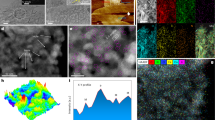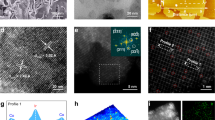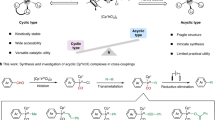Abstract
Open-shell systems based on first-row transition metals and their involvement in various catalytic processes are well explored. By comparison, mononuclear open-shell complexes of precious transition metals remain underdeveloped. This is particularly true for IrII complexes, as there is very limited information available regarding their application in catalysis. Here we show that a family of IrII metalloradicals, featuring a C6H3-2,6-(OP(tBu)2)2 (POCOP) pincer ligand, effectively catalyses olefin isomerization—a key step in alkane metathesis—exhibiting up to 20 times higher activity than their IrI counterparts. Computational studies reveal that the IrII/IrIV redox cycling enables faster kinetics than the traditional IrI/IrIII pathway owing to reduced barriers for the oxidative addition and reductive elimination steps. Thus, this study presents a redox catalyst involving an IrII/IrIV pair, highlighting the capabilites of precious-metal systems that extend beyond traditional redox cycles. These findings emphasize the need for expanding catalytic design principles, especially for platinum-group metals.

This is a preview of subscription content, access via your institution
Access options
Access Nature and 54 other Nature Portfolio journals
Get Nature+, our best-value online-access subscription
$32.99 / 30 days
cancel any time
Subscribe to this journal
Receive 12 print issues and online access
$259.00 per year
only $21.58 per issue
Buy this article
- Purchase on SpringerLink
- Instant access to full article PDF
Prices may be subject to local taxes which are calculated during checkout




Similar content being viewed by others
Data availability
All data supporting the findings of this study are available within the Article and its Supplementary Information. Crystallographic data for the structures reported in this Article have been deposited at the Cambridge Crystallographic Data Centre (CCDC), under deposition numbers CCDC 2352734 (2·BF4), 2352735 (2·NTf2), 2352737 ([2·C2H4][BArF]) and 2352737 (2·Cl). Copies of the data can be obtained free of charge via https://www.ccdc.cam.ac.uk/structures/. Atomic coordinates of the optimized computational models are provided in Supplementary Data 1–5. Source data are provided with this paper.
References
Hartwig, J. Organotransition Metal Chemistry: From Bonding to Catalysis (Univ. Science Books, 2010).
Crabtree, R. H. Organometallic Chemistry of the transition metals (Wiley, 1994).
Bochmann, M. Organometallics and Catalysis: An Introduction (Oxford Univ. Press, 2015).
Blythe, I. M. et al. Characterization and reactivity of copper(II) and copper(III) σ-aryl intermediates in aminoquinoline-directed C–H functionalization. J. Am. Chem. Soc. 145, 18253–18259 (2023).
Bour, J. R. et al. Carbon–carbon bond-forming reductive elimination from isolated nickel(III) complexes. J. Am. Chem. Soc. 138, 16105–16111 (2016).
Bouley, B. S., Tang, F., Bae, D. Y. & Mirica, L. M. C. – H bond activation via concerted metalation–deprotonation at a palladium(III) center. Chem. Sci. 14, 3800–3808 (2023).
Na, H. & Mirica, L. M. Deciphering the mechanism of the Ni-photocatalyzed C‒O cross-coupling reaction using a tridentate pyridinophane ligand. Nat. Commun. 13, 1313 (2022).
Shi, Q., Richmond, T. G., Trogler, W. C. & Basolo, F. Mechanism of carbon monoxide substitution in a metal radical: vanadium hexacarbonyl. J. Am. Chem. Soc. 104, 4032–4034 (1982).
Shi, Q. Z., Richmond, T. G., Trogler, W. C. & Basolo, F. Mechanism of carbon monoxide substitution in metal carbonyl radicals: vanadium hexacarbonyl and its phosphine-substituted derivatives. J. Am. Chem. Soc. 106, 71–76 (1984).
Roecker, L. & Meyer, T. J. Hydride transfer in the oxidation of formate ion by [(Bpy)2(Py)Ru(O)]2. J. Am. Chem. Soc. 108, 4066–4073 (1986).
Hood, D. M. et al. Highly active cationic cobalt(II) hydroformylation catalysts. Science 367, 542–548 (2020).
Hood, D. M., Johnson, R. A., Vinyard, D. J., Fronczek, F. R. & Stanley, G. G. Cationic cobalt(II) bisphosphine hydroformylation catalysis: in situ spectroscopic and reaction studies. J. Am. Chem. Soc. 145, 19715–19726 (2023).
Königsmann, M. et al. Metalloenzyme‐inspired catalysis: selective oxidation of primary alcohols with an iridium–aminyl‐radical complex. Angew. Chem. Int. Ed. 46, 3567–3570 (2007).
Tran, G. N., Bouley, B. S. & Mirica, L. M. Isolation and characterization of heteroleptic mononuclear palladium(I) complexes. J. Am. Chem. Soc. 144, 20008–20015 (2022).
Hetterscheid, D. G. H. & de Bruin, B. Open-shell rhodium and iridium species in (catalytic) oxygenation reactions. J. Mol. Catal. A 251, 291–296 (2006).
de Bruin, Bas et al. Dioxygen activation by a mononuclear IrII–ethene complex. Angew. Chem. Int. Ed. 41, 2135–2135 (2002).
Liu, Z. et al. Reduction of quinones by NADH catalyzed by organoiridium complexes. Angew. Chem. Int. Ed. 52, 4194–4197 (2013).
Liao, K., Negretti, S., Musaev, D. G., Bacsa, J. & Davies, H. M. L. Site-selective and stereoselective functionalization of unactivated C–H bonds. Nature 533, 230–234 (2016).
Liao, K. et al. Site-selective and stereoselective functionalization of non-activated tertiary C–H bonds. Nature 551, 609–613 (2017).
Powers, D. C. & Ritter, T. Bimetallic Pd(III) complexes in palladium-catalysed carbon–heteroatom bond formation. Nat. Chem. 1, 302–309 (2009).
Deprez, N. R. & Sanford, M. S. Synthetic and mechanistic studies of Pd-catalyzed C–H arylation with diaryliodonium salts: evidence for a bimetallic high oxidation state Pd intermediate. J. Am. Chem. Soc. 131, 11234–11241 (2009).
Hou, Z., Koizumi, T., Fujita, A., Yamazaki, H. & Wakatsuki, Y. The binuclear iridium(II) hydride complex [(C5Me5)Ir(µ-H)]2: a novel base for reversible deprotonation of acidic organic compounds and a unique catalyst for C–C bond cleavage of aromatic 1,2-diols and Michael additions. J. Am. Chem. Soc. 123, 5812–5813 (2001).
Mendel, M., Gnägi, L., Dabranskaya, U. & Schoenebeck, F. Rapid and modular access to vinyl cyclopropanes enabled by air‐stable palladium(I) dimer catalysis. Angew. Chem. Int. Ed. 62, e2022111 (2023).
Puschmann, F. F., Grützmacher, H. & de Bruin, B. Rhodium(0) metalloradicals in binuclear C–H activation. J. Am. Chem. Soc. 132, 73–75 (2009).
Chan, K. S., Li, X. Z., Dzik, W. I. & de Bruin, B. Carbon–carbon bond activation of 2,2,6,6-tetramethyl-piperidine-1-oxyl by a RhII metalloradical: a combined experimental and theoretical study. J. Am. Chem. Soc. 130, 2051–2061 (2008).
Krämer, T. et al. Stability and C–H bond activation reactions of palladium(I) and platinum(I) metalloradicals: carbon-to-metal h-atom transfer and an organometallic radical rebound mechanism. J. Am. Chem. Soc. 145, 14087–14100 (2023).
Tepaske, M. A. et al. C–H bond activation by iridium(III) and iridium(IV) oxo complexes. Angew. Chem. Int. Ed. 63, e202316729 (2024).
Scheibel, M. G. et al. Closed-shell and open-shell square-planar iridium nitrido complexes. Nat. Chem. 4, 552–558 (2012).
Scheibel, M. G. et al. Synthesis and reactivity of a transient, terminal nitrido complex of rhodium. J. Am. Chem. Soc. 135, 17719–17722 (2013).
Hidalgo, N., Moreno, J. J., Garcia-Rubio, I. & Campos, J. Enhanced dihydrogen activation by mononuclear iridium(II) compounds: a mechanistic study. Angew. Chem. Int. Ed. 134, e202206831 (2022).
Goldman, A. S. et al. Catalytic alkane metathesis by tandem alkane dehydrogenation-olefin metathesis. Science 312, 257–261 (2006).
Biswas, S. et al. Olefin isomerization by iridium pincer catalysts. experimental evidence for an η3-allyl pathway and an unconventional mechanism predicted by DFT calculations. J. Am. Chem. Soc. 134, 13276–13295 (2012).
Rimoldi, M., Fodor, D., van Bokhoven, J. A. & Mezzetti, A. Catalytic hydrogenation of liquid alkenes with a silica-grafted hydride pincer iridium(III) complex: support for a heterogeneous mechanism. Catal. Sci. Tech. 5, 4575–4586 (2015).
MacInnis, M. C. et al. Cationic two-coordinate complexes of Pd(I) and Pt(I) have longer metal–ligand bonds than their neutral counterparts. Cell 1, 902–920 (2016).
Yang, W. et al. Switching between hydrogenation and olefin transposition catalysis via silencing NH cooperativity in Mn(I) pincer complexes. ACS Catal. 12, 10818–10825 (2022).
Wang, Y. et al. An agostic iridium pincer complex as a highly efficient and selective catalyst for monoisomerization of 1-alkenes to trans-2-alkenes. Angew. Chem. Int. Ed. 56, 1614 (2017).
Blackmond, D. G. Reaction progress kinetic analysis: a powerful methodology for mechanistic studies of complex catalytic reactions. Angew. Chem. Int. Ed. 44, 4302–4320 (2005).
Blackmond, D. G. et al. Investigations of Pd-catalyzed ArX coupling reactions informed by reaction progress kinetic analysis. J. Org. Chem. 71, 4711–4722 (2006).
Burés, J. & Nielsen, C. D.-T. Visual kinetic analysis. Chem. Sci. 10, 348–353 (2019).
Kozuch, S. & Shaik, S. A Combined kinetic–quantum mechanical model for assessment of catalytic cycles: application to cross-coupling and Heck reactions. J. Am. Chem. Soc. 128, 3355–3365 (2006).
Kozuch, S. & Shaik, S. Kinetic–quantum chemical model for catalytic cycles: the Haber–Bosch process and the effect of reagent concentration. J. Phys. Chem. A 112, 6032–6041 (2008).
Uhe, A., Kozuch, S. & Shaik, S. Automatic analysis of computed catalytic cycles. J. Comput. Chem. 32, 978–985 (2010).
Kozuch, S. & Shaik, S. How to conceptualize catalytic cycles? The energetic span model. Acc. Chem. Res. 44, 101–110 (2011).
Fernández, I. & Bickelhaupt, F. M. The activation strain model and molecular orbital theory. Chem. Soc. Rev. 43, 4953–4967 (2014).
Bickelhaupt, F. M. & Houk, K. N. Analyzing reaction rates with the distortion/interaction–activation strain model. Angew. Chem. Int. Ed. 56, 10070–10086 (2017).
Fernández, I. in Discovering the Future of Molecular Sciences (ed. Pignataro, B.), 165–187 (Wiley, 2014).
Bickelhaupt, F. M. & Baerends, E. J. in Reviews in Computational Chemistry Vol. 15 (eds Lipkowitz, K. B. & Boyd, D. B.) 1–86 (Wiley, 2000).
von Hopffgarten, M. & Frenking, G. Energy decomposition analysis. WIREs Comput. Mol. Sci. 2, 43–62 (2012).
Fernández, I. in Applied Theoretical Organic Chemistry (ed. Tantillo, D. J.) 191–226 (World Scientific, 2018).
Wang, Y., Qin, C., Jia, X., Leng, X. & Huang, Z. An agostic iridium pincer complex as a highly efficient and selective catalyst for monoisomerization of 1‐alkenes to trans‐2‐alkenes. Angew. Chem. Int. Ed. 56, 1614–1618 (2017).
Stegner, P. et al. Metallic barium: a versatile and efficient hydrogenation catalyst. Angew. Chem. Int. Ed. 60, 4252–4258 (2020).
Kumari, A., Gholap, S. P. & Fernandes, R. A. Tandem IBX‐promoted primary alcohol oxidation/opening of intermediate β,γ‐diolcarbonate aldehydes to (E)‐γ‐hydroxy‐α,β‐enals. Chem. Asian J. 14, 2278–2290 (2019).
Reiter, D. et al. Disilene–silylene interconversion: a synthetically accessible acyclic bis(silyl)silylene. J. Am. Chem. Soc. 141, 13536–13546 (2019).
Martin, J. et al. Highly active superbulky alkaline earth metal amide catalysts for hydrogenation of challenging alkenes and aromatic rings. Angew. Chem. Int. Ed. 59, 9102–9112 (2020).
Cahiez, G., Gager, O., Buendia, J. & Patinote, C. Iron thiolate complexes: efficient catalysts for coupling alkenyl halides with alkyl Grignard reagents. Chem. Eur. J. 18, 5860–5863 (2012).
Chen, Y.-G. et al. Regioselective Ni-catalyzed carboxylation of allylic and propargylic alcohols with carbon dioxide. Org. Lett. 19, 2969–2972 (2017).
Acknowledgements
The project that gave rise to these results received the support of a fellowship from ‘laCaixa’ Foundation (ID 100010434; fellowship code B005930; A.P.-M.). This work was also supported by the Spanish MCIN/AEI/10.13039/501100011033 (grants PID2022-139782NB-I00, J.C.; PID2022-139318NB-I00, I.F.; TED2021-132225B-I00, J.C. and RED2022-134287-T, J.C. and I.F.). We acknowledge support from the European Commission under Marie Skłodowska-Curie fellowships, project numbers 101067947 (TRUFA, J.J.M.) and 101109769 (READHY, N.H.). We acknowledge the use of CESGA computational facilities. T. J. Gerard and P. L. Holland are acknowledged for their help with EPR spectroscopy. E. Carmona is acknowledged for helpful discussions.
Author information
Authors and Affiliations
Contributions
A.P.-M. and N.H. carried out the experimental work: synthesis and characterization of new complexes, reactivity studies, catalytic and kinetic investigations and substrate scope. A.P.-M., J.J.M. and I.F. carried out the computational studies. J.C. supervised the overall work and wrote the manuscript with participation of all authors.
Corresponding author
Ethics declarations
Competing interests
The authors declare no competing interests.
Peer review
Peer review information
Nature Chemistry thanks the anonymous reviewer(s) for their contribution to the peer review of this work.
Additional information
Publisher’s note Springer Nature remains neutral with regard to jurisdictional claims in published maps and institutional affiliations.
Extended data
Extended Data Fig. 1 Monitoring olefin isomerization with IrI and IrII.
Conversion of 1-octene at 125 °C (dashed line) or 1-hexene at 70 °C (solid line) over time mediated by 1 (blue) and after adding 1 equivalent of Ag[BArF] (pink).
Extended Data Fig. 2 Computational mechanistic profile for N2/olefin ligand substitution in IrI vs IrII.
Free energy profile for the dissociation of N2 and coordination of 1-hexene. For clarity, only the structures for the IrII are drawn. Level of theory: PBE0-D3/LANL2TZ(Ir) augmented by a diffuse d-type function (exponent=0.07645)/6-311 G(d,p) all other atoms.
Extended Data Fig. 3 Kinetic profiles.
a) Initial rates plot: Ln of the initial rate, v0, of the isomerization of 1-hexene (M) vs Ln of the initial concentration of 1-hexene, v0 in M·s-1, [1-hexene]0 in M. b) Eyring plot: Ln of k/T vs 1/T·103, k in s-1·M-1, T in K, t in s.
Supplementary information
Supplementary Information
Data relating to the characterization of iridium compounds, NMR, UV–vis and EPR spectra, kinetic and mechanistic studies, crystal structure determination and computational studies.
Supplementary Data 1
Crystallographic data for structure 2·BF4 (CCDC 2352734).
Supplementary Data 2
Crystallographic data for structure 2·NTf2 (CCDC 2352735).
Supplementary Data 3
Crystallographic data for structure 2·C2H4][BArF] ((CCDC 2352736).
Supplementary Data 4
Crystallographic data for structure 2·Cl (CCDC 2352737).
Supplementary Data 5
Atomic coordinates of the optimized computational model.
Source data
Source Data Fig. 2
Source data for Fig. 2.
Source Data Fig. 4
Source data for Fig. 4.
Source Data Extended Data Fig./Table 1
Source data for Extended Data Fig. 1.
Source Data Extended Data Fig./Table 3
Source data for Extended Data Fig. 3.
Rights and permissions
Springer Nature or its licensor (e.g. a society or other partner) holds exclusive rights to this article under a publishing agreement with the author(s) or other rightsholder(s); author self-archiving of the accepted manuscript version of this article is solely governed by the terms of such publishing agreement and applicable law.
About this article
Cite this article
Pita-Milleiro, A., Hidalgo, N., Moreno, J.J. et al. An open-shell Ir(II)/Ir(IV) redox couple outperforms an Ir(I)/Ir(III) pair in olefin isomerization. Nat. Chem. 17, 606–613 (2025). https://doi.org/10.1038/s41557-024-01722-7
Received:
Accepted:
Published:
Issue date:
DOI: https://doi.org/10.1038/s41557-024-01722-7



